India's Interior Design Market in 2025 - Trends, Growth, and Future Opportunities
The interior design market in India is witnessing great growth and development due to factors like urbanization, rising income, and demand for pleasing and functional spaces. Thus, the interior design market also sees a rise in demand for interior designers in India. There are several types of interior designers, each specializing in a specific design to elevate your home or commercial space’s interiors. Let’s see the interior market trend in 2025.
How Big Is the Interior Market?
As we have seen, the interior design market in India is growing fast, with no signs of slowing down. Let’s look at the numbers:
-
In 2023, the market was valued at USD 31.5 billion.
-
By 2025, it’s expected to grow to USD 35 billion.
-
By 2032, the market is projected to reach a whopping USD 67.4 billion.
This growth represents a steady 8.81% annual growth rate from 2024 to 2032. The increasing demand for personalized and sustainable interiors drives this growth.
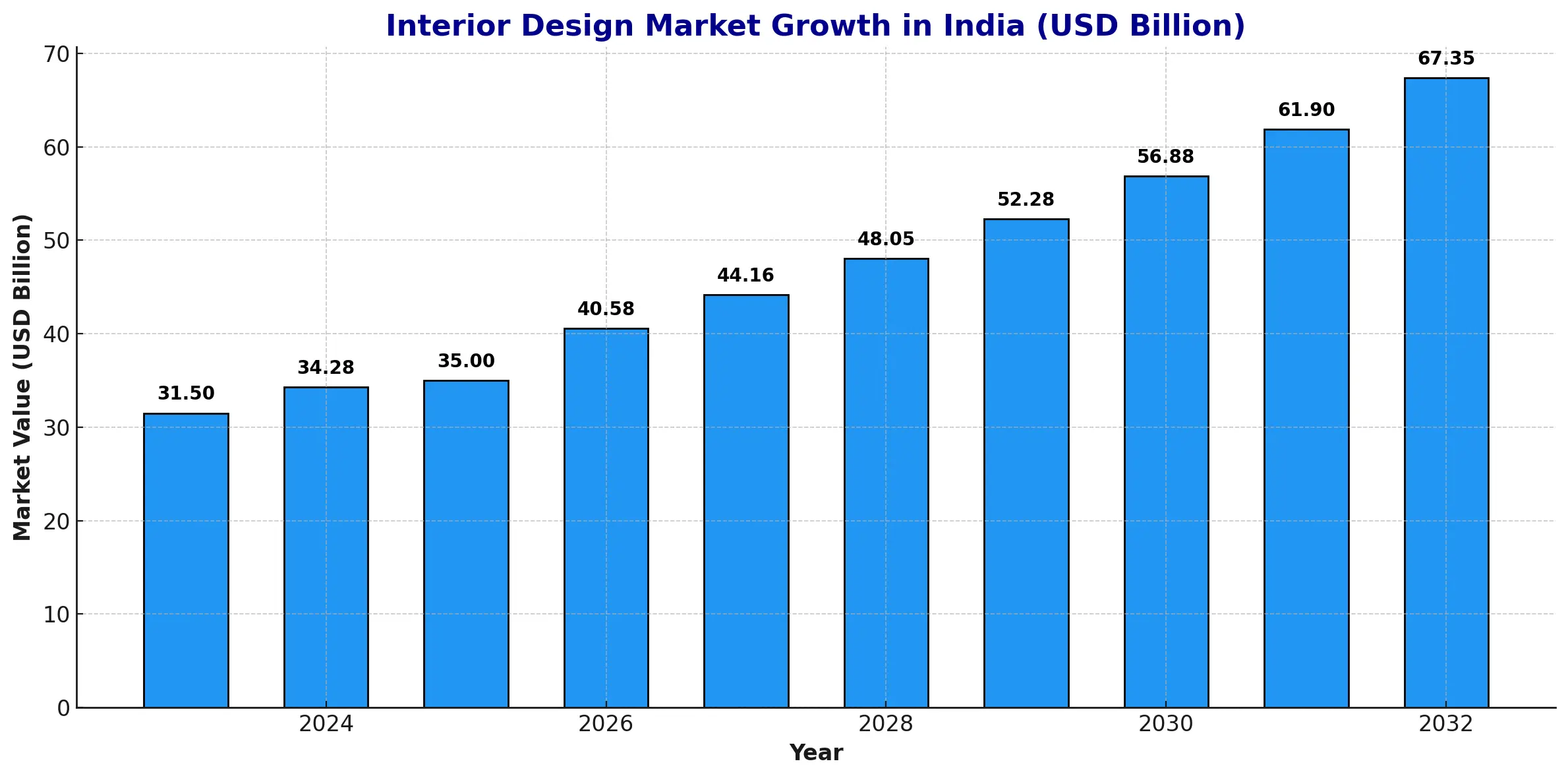
Resource: IMARC Group Report on India’s Interior Design Market
What are the Key Drivers of Interior Market Growth?
Urbanization: By 2030, 40% of the people in India will be expected to live in urbanized areas, and this makes them increase their demand for innovative interior designs that maximize functionality along with aesthetics in limited space.
Real Estate Growth: Indian GDP is already dominated significantly by the real estate industry and, therefore, promises to become the second-largest sector after agriculture. The booming demand is inducing investment in trendy furniture that adds to the value of one's property.
Rising Disposable Incomes: With every increase in income, this amount is going into that 5-10% of what people are willing to spend excessive amount on their interiors. Most people want trendy kitchens, sleek furniture, and smart houses.
Sustainability Awareness: About 30% of new interior design projects now include eco-friendly materials and energy-efficient designs, which is a shift towards sustainable living.
Technological Integration: Advancements in tools like 3D rendering and virtual reality enable clients to visualize spaces before construction, streamlining decision-making and reducing errors.
Regional Growth Patterns
North India: Demand is led by cities such as Delhi and Chandigarh due to urbanization and an emerging middle class.
West India: Significant contributors are Mumbai and Pune, with an increase in commercial property, but with a penchant for new designs.
South India: Tech hubs such as Bangalore and Hyderabad are major players, with a focus on innovative and sustainable interior solutions.
East India: Kolkata is gradually increasing its share, with a growing interest in modern interior designs.
South India is a major contributor to the interior industry's growth in India. The increased number of private builders and commercial buildings like office spaces is the reason behind the major share of South India.
Source: PS Market Research
Which are the states in India that are in growing demand for interior design?
|
State |
Key Cities |
Factors Driving Demand |
|
Maharashtra |
Mumbai, Pune |
Rapid urbanization, a booming real estate sector, and a growing affluent population. |
|
Karnataka |
Bengaluru |
Expansion of the IT industry, has lead to increased demand for residential and commercial spaces. |
|
Delhi NCR |
Delhi, Gurgaon, Noida |
Significant infrastructure development and a rising number of corporate offices. |
|
Tamil Nadu |
Chennai |
Growth in the real estate sector and increasing disposable incomes. |
|
Gujarat |
Ahmedabad, Surat, Vadodara |
Economic growth, urbanization, and a burgeoning middle class. |
|
Telangana |
Hyderabad |
Development of IT hubs and a surge in residential projects. |
|
Uttar Pradesh |
Lucknow, Noida, Ghaziabad |
Rapid urbanization and infrastructure development. |
Source: Mordor Intelligence
These regions are witnessing the increasing demand for interior designing services on account of factors such as urbanization, disposable incomes on the rise, and the increasing middle-class population. This commercial real estate boom especially in co-working spaces has been adding a lot of value. The commercial category is currently leading the market with a market share of approximately 75% in the year 2023 and has also emerged as the growth-maximizing application category.
These factors include social media influence and lifestyle changes that create the demand for interior design services in these states.
What are the Popular Interior Types?
Residential Interiors:
Smart Homes: Incorporating Automated systems to control lights, fans, climate control, and security to maximize comfort and luxurious experience.
Minimalist Designs: Adding simple, elegant elements and keeping the decor simple to maintain clean, clutter-free spaces.
Personalized Spaces: They reflect the personality of the owner. Designing themed rooms, cozy reading nooks in a corner, and personalized interior designs to provide sophisticated yet functional living space for the customer.
Commercial Interiors:
Flexible Workspaces: Functional breakout areas and workstations will enhance the well being of employees and thus improve productivity in the office.
Retail and Hospitality: Designing unique and attention-grabbing interiors in hotels, resorts, shops, and other retail stores to attract a customer
Sustainability: Office or commercial spaces and residential interiors with plants, recycled furniture and natural lighting.
Check out our previous blog to know more about the types of interior design styles and themes.
Challenges in the Market
High Competition: The market's fragmentation calls for designs that are quite different and of great customer service.
Budget Constraints: Quality and cost have to be balanced since clients are looking for premium designs at affordable prices.
Project Timelines: Complex projects take longer periods and have additional costs.
Keeping Up with Trends: Continuous learning and adaptation are required to meet the changing expectations of clients.
Emerging Trends in 2025
Sustainable Design: A growing preference for eco-friendly interiors using recycled materials, solar energy, and energy-efficient systems. Green buildings in India can reduce water consumption and CO2 emissions by 20%–30% and up to 35%, respectively.
Tech-Driven Interiors: Integration of smart furniture with built-in charging ports, touchless lighting, fan and voice-controlled systems.
Multi-Functional Spaces: Designs that serve multiple purposes, such as living rooms doubling as home offices, living rooms that can be converted to bedrooms, and kitchens that can serve as dining rooms with the help of multi functional furniture and design.
Bold Colors and Patterns: Selecting and including bright colors, special patterns, and textures on floors, ceilings, walls and space decoration elements in residential and commercial spaces.
Vintage Meets Modern: Blending antique furniture with sleek modern designs to create timeless interiors. Vintage fashioned bathtubs, chandeliers, mirrors, round tables and other antique elements can be included in a modern space to enhance the appearance of the room.
Future Opportunities for Interior Designers
Digital Marketing for Designers: Using platforms such as Instagram and Pinterest to promote portfolios and bring in new clients.
Focus on Smaller Cities: Leverage the growth of cities by tapping into untapped markets of Tier 2 and Tier 3 cities as urbanization spreads to those areas.
Green Certification: Green certification is given to builders and building projects that meet certain requirements for sustainability. Get the green certificate to gain the trust of your customers who are looking for eco-friendly buildings.
Affordable Design Solutions: Provide budget-friendly, modular designs to attract middle-income families.
Conclusion
India's interior design market is very vibrant and full of potential in 2025. Rising incomes, technological advancement, and a drive for sustainability are expected to fuel further growth in this industry. Whether it's a cozy home, a smart office, or an Instagram-worthy shop, interior design is all about creating spaces that inspire and delight. Now is the perfect time to start if you're planning to transform your space!
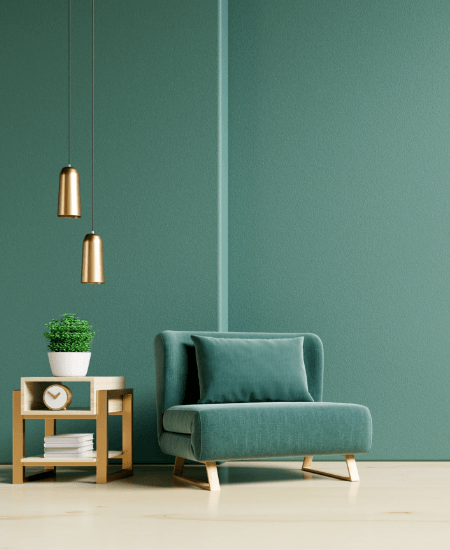

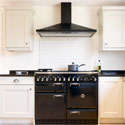
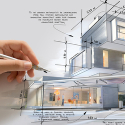


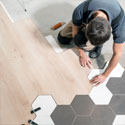









Post a Comment